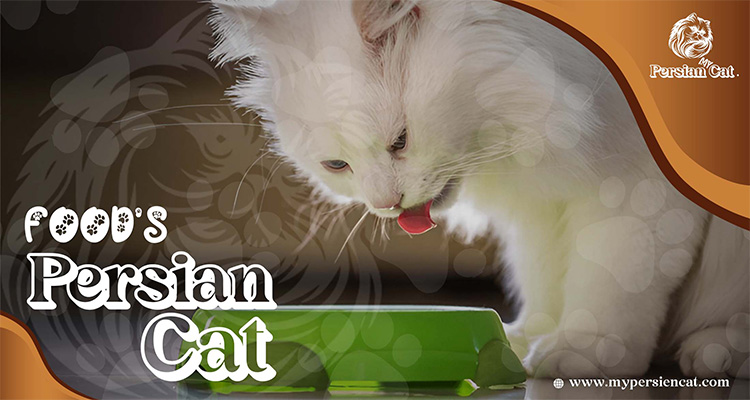Introduction
If you have a Persian cat like I do, you know they’re more than just pets—they’re fluffy royalty! Picking the right Persian cat food isn’t just a chore; it helps keep their coat soft and their belly calm. Because of their flat faces and
sensitive stomachs, Persian cats need special food to stay healthy. So, what food is good for Persian cats? Let’s take a closer look at the best choices for your fancy little friend.
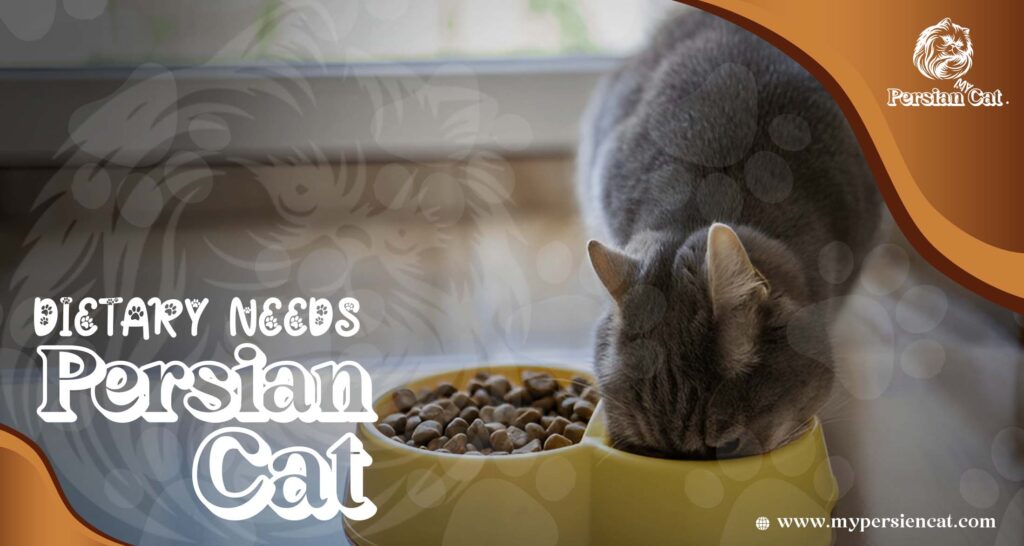
Why Persian Cats Have Special Dietary Needs
Take a good look at a Persian cat—they have flat faces, big round eyes, and long, thick fur. As lovely as they are, these features can make mealtime tricky. My own cat had trouble chewing until I found food made just for her face shape.
Their long coats can cause hairballs, and their stomachs are often sensitive. And depending on how big Persian cats get, they may need more or less food. Even their shiny Persian cat eye color can show signs of health. That’s why the right Persian cat food really matters—it helps them feel and look their best every day.
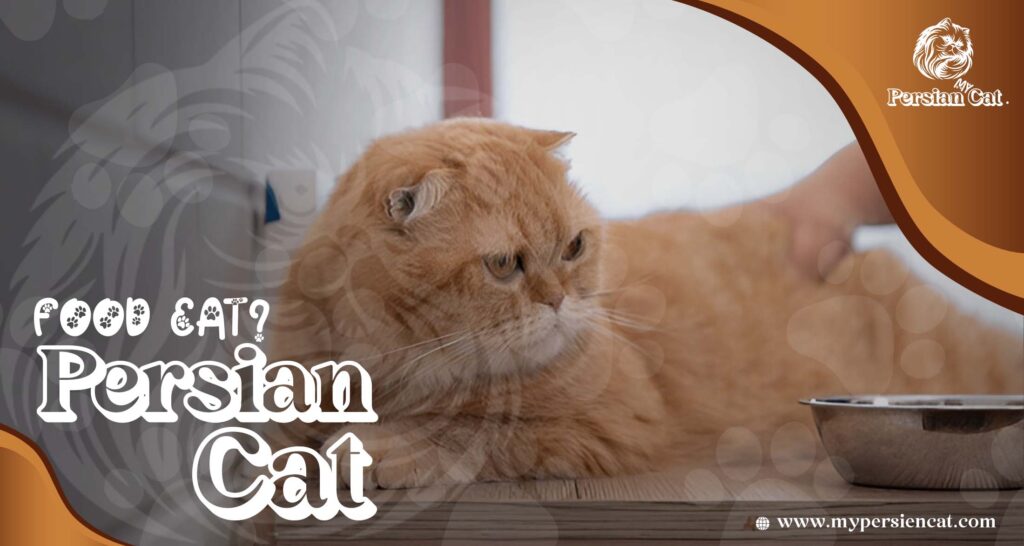
What Food Do Persian Cats Eat?
When I got my Persian cat, I didn’t know she’d be so picky about food. I found out fast that what food Persian cats eat matters a lot. It keeps them happy and healthy.
So, what food can Persian cats eat? They need soft proteins like chicken or fish. Omega fats help their coats shine. A bit of fiber helps with hairballs from all that fur. If you’re asking what food is good for Persian cats, go for food that’s easy to digest. The best Persian cat food helps their skin, coat, and tummy—all in one bowl.
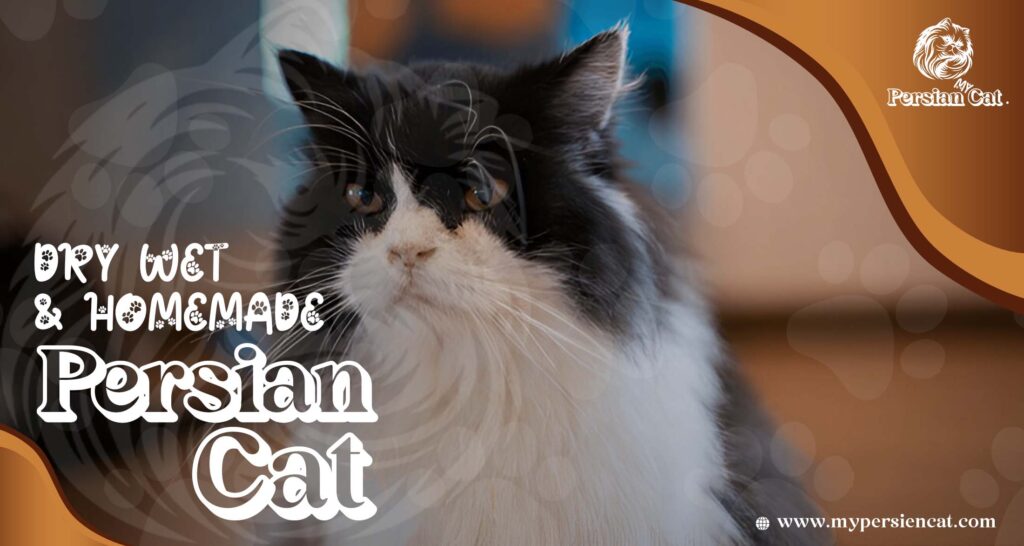
Best Food for Persian Cats (Dry, Wet, and Homemade Options)
When I first brought home my Persian cat, I had no clue what to feed her. I saw dry food, wet food, and even homemade meals. It felt like shopping at a food market made just for cats!
Dry food is easy to use. It doesn’t spoil fast, and it’s less messy. Some types are shaped to help Persian cats chew better. Look for dry food that’s high in protein. Grain-free options and ones made for hairball control are even better.
Wet food is soft and tasty. My Persian runs to the bowl when I open a can! Wet food adds extra water to her diet. That helps with her stomach and keeps her coat shiny. Just check the label. You want real meat and no junk.
Homemade food takes time but can be worth it. I sometimes cook plain chicken and mix in a few soft veggies. My cat loves it, and I feel good giving her fresh food. Just be sure to talk to your vet first. Your cat still needs the right mix of vitamins.
So, what’s the best food for Persian cats? That depends on your cat. Some like crunch. Others like soft bites. Some love both! You might try Royal Canin Persian cat food or cook at home. The goal is simple—choose food that’s easy to eat, full of good stuff, and kind to their tummy.
No matter what you choose, the right Persian cat food will help keep your cat happy, full, and fluffy!
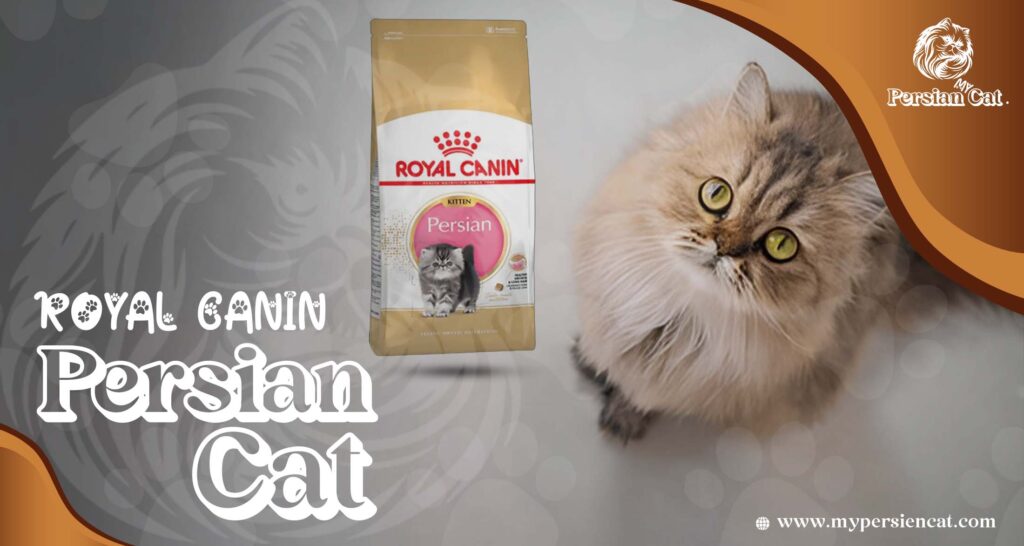
Royal Canin Persian Cat Food: Is It Worth It?
When I brought my Persian cat home, picking food was hard. I saw lots of brands, but one stood out—Royal Canin Persian Cat Food. The bag had a fancy white cat on it. I thought, “This might be the right one.”
So, I gave it a shot.
The dry food is small and flat. It’s made for cats with flat faces, like mine. My cat could chew better. Her coat looked smooth. Her tummy felt better. It really seemed to help.
Royal Canin Persian Adult Dry Cat Food is full of protein and fiber. It helps stop hairballs. It also makes fur soft and shiny. For young cats, try Royal Canin Cat Food Persian Kitten. It’s softer and made for little bellies.
But is it for every cat? Not always. Some cats don’t like the taste. And yes, the Persian cat food price is a bit high. If your cat is very picky, or if you want to save money, there are other choices too.
Still, for many owners, Royal Canin cat food for Persian cats is a great pick. It’s made just for them. It helps with common problems, like chewing and hairballs. If you want food that works well and is easy to serve, this brand is worth trying. It could be the perfect fit for your fancy little friend.
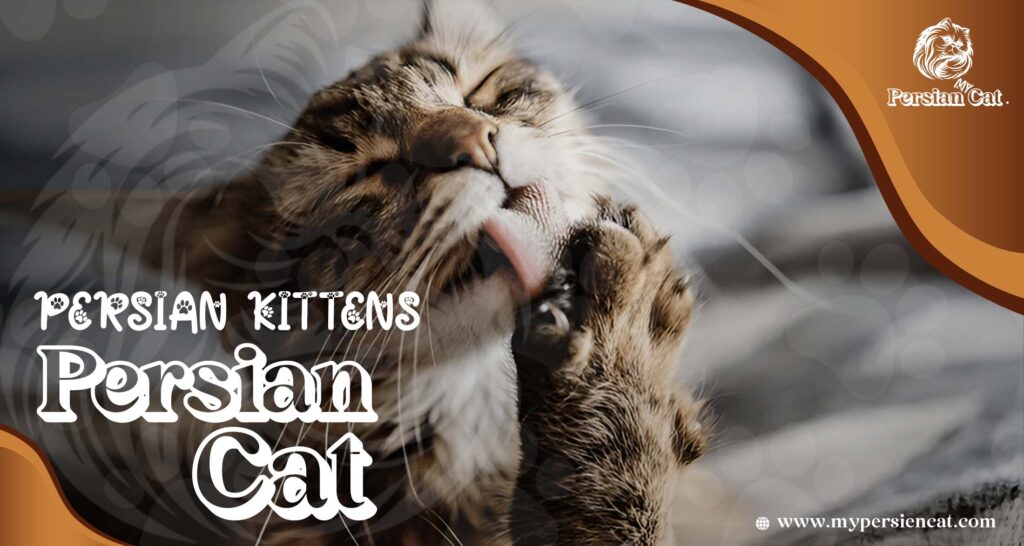
Best Cat Food for Persian Kittens
When I got my Persian kitten, I didn’t know how much care she needed. She was small, fluffy, and full of energy. But she couldn’t eat just anything. Persian kitten cat food has to be soft and easy to chew. It also needs to help them grow strong and stay healthy.
Persian kittens need more than just food—they need the right food. The best cat food for Persian kittens has good protein, healthy fats, and the right vitamins. Omega-3s help their fur stay soft and shiny. Their eyes sparkle too—just look at that Persian cat eye color!
I started with Royal Canin Cat Food Persian Kitten. It’s made for their small mouths and flat faces. My kitten loved it. Her coat looked great, and her tummy felt fine. Yes, it costs more, but it worked well for her.
Some kittens like dry food. Others like wet food. Both can be good if they have real meat and no junk. Just check the label. Make sure it says it’s for kittens—not adult cats. Kitten food has more fat and more nutrients to help them grow fast.
If you’re not sure which Persian cat kitten food to try, go simple. Pick food with real meat first on the list. Skip anything with dyes or strange names. You can even ask your vet for tips.
Raising a Persian kitten is like raising a little cloud with legs. Give them the best food you can. It helps their coat, their belly, and their mood. A healthy kitten is a happy one—and so much fun to cuddle!
Can Persian Cats Eat Human Food?
Let’s be real—if you’ve ever had a snack and your Persian cat gave you that look, you’ve probably asked, “Can she have a bite?” I’ve been there. My cat once tried to steal my chicken when I turned away for two seconds!
So, what human food can Persian cats eat? The good news is—some human food is safe in small amounts. But not all. Persian cats have soft bellies and need the right food to stay happy and healthy.
Safe Human Foods (In Tiny Bites!)
Here are some things I’ve given my cat—and she loved them:
- Cooked chicken or turkey – plain, with no salt or sauce.
- Cooked salmon – full of good fats for a shiny coat.
- Canned pumpkin – helps with hairballs and is easy to digest.
- Soft green beans or carrots – gentle on the stomach and fun to nibble.
These are treats, not meals. Persian cat food should still be their main dish. Think of these snacks as a little extra love.
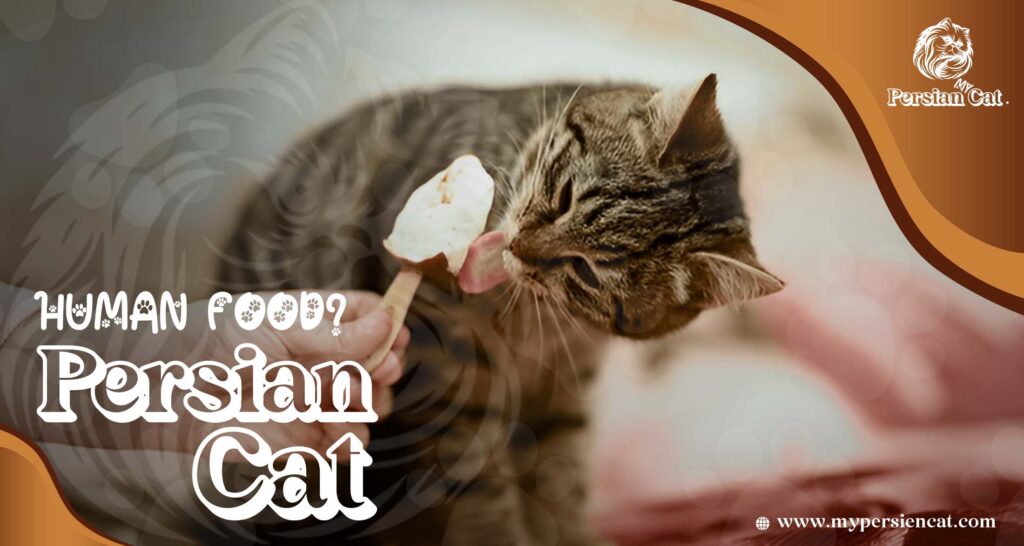
Human Foods to Avoid
Some foods are bad—even in small amounts. I learned this the hard way (hello, 3 a.m. vet call). Here’s what to keep far away:
- Onions and garlic – these can hurt their blood.
- Milk and cheese – most Persian cats can’t digest dairy.
- Chocolate and coffee – very toxic!
- Raw meat or fish – can carry bad germs.
- Grapes and raisins – dangerous to their kidneys.
I know it’s hard to say no, especially when they look at you with those big eyes. But some things are just not worth the risk.
The Bottom Line
So, do Persian cats need special food? Yes! Their flat faces, soft coats, and sensitive tummies all need extra care. The best food for Persian cats is made just for them.
A small treat from your plate now and then is okay. But their main meals should come from trusted cat food for Persian cats—dry, wet, or even homemade (with vet advice). That’s how you keep your fluffy friend happy, healthy, and ready for snuggles
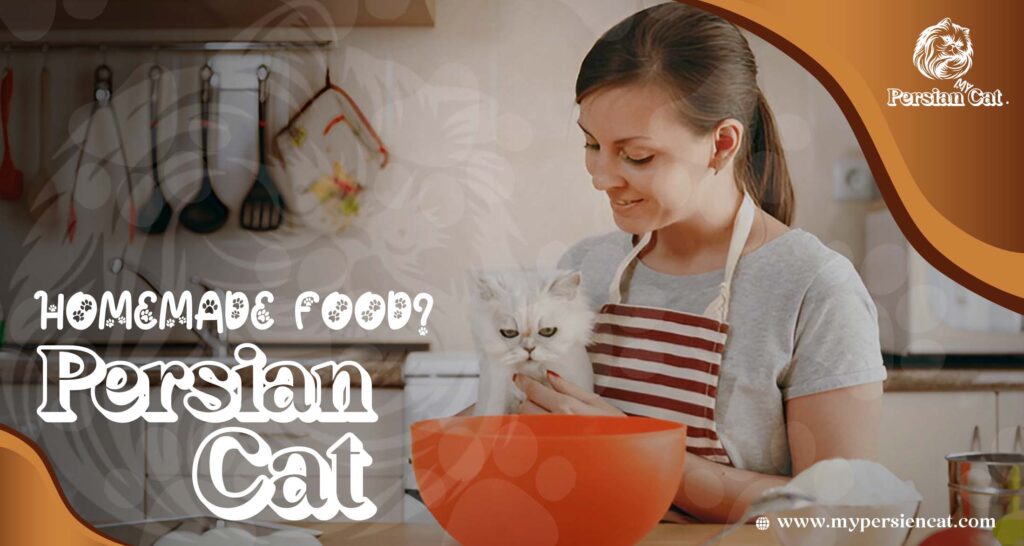
Homemade Persian Cat Food: Should You Try It?
Making homemade Persian cat food sounds fun, right? I tried it once when my cat refused to eat anything from the store. She sniffed her bowl, looked at me like I was crazy, and walked away. So, I went to the kitchen. I cooked plain chicken. No salt, no oil. Just soft, clean meat. I added a few mashed carrots and a tiny bit of rice. Guess what? She loved it.
So, is homemade food a good idea? It can be! But it needs to be done right. A Persian cat has a soft belly and a fancy coat. That means they need a good mix of protein, fat, and fiber. They also need the right vitamins. Without those, they can get sick—even if the food is fresh.
Pros of Homemade Food:
- You know what’s in the bowl.
- No junk, fillers, or fake stuff.
- You can make it soft and easy to chew.
Cons of Homemade Food:
- It takes time to cook.
- You need to plan each meal.
- It’s hard to balance nutrients on your own.
That’s why I talk to my vet first. She helped me figure out what food is good for Persian cats—at home and from the store. Sometimes I still mix in a little homemade bite as a treat. But I stick with trusted Persian cat food most of the time.
If you try this route, keep it simple. Use fresh meat like chicken or turkey. Cook it well. Add soft veggies like pumpkin or green beans. No spices. No salt. And don’t forget: cats need things like taurine and omega fats. That’s where supplements come in. My vet recommended a powder I mix into the food. Homemade Persian cat food can be a great treat—or a part of your feeding plan. But it’s not always the best full-time choice unless you’re ready to do the work.
Want my advice? Start small. Try one homemade meal a week. Watch how your cat reacts. If their coat shines and their belly stays calm, you’re on the right path. If not, go back to a trusted brand. In the end, whether it’s homemade, store-bought, or a mix of both, the goal is simple: happy cat, healthy coat, and zero drama at mealtime.
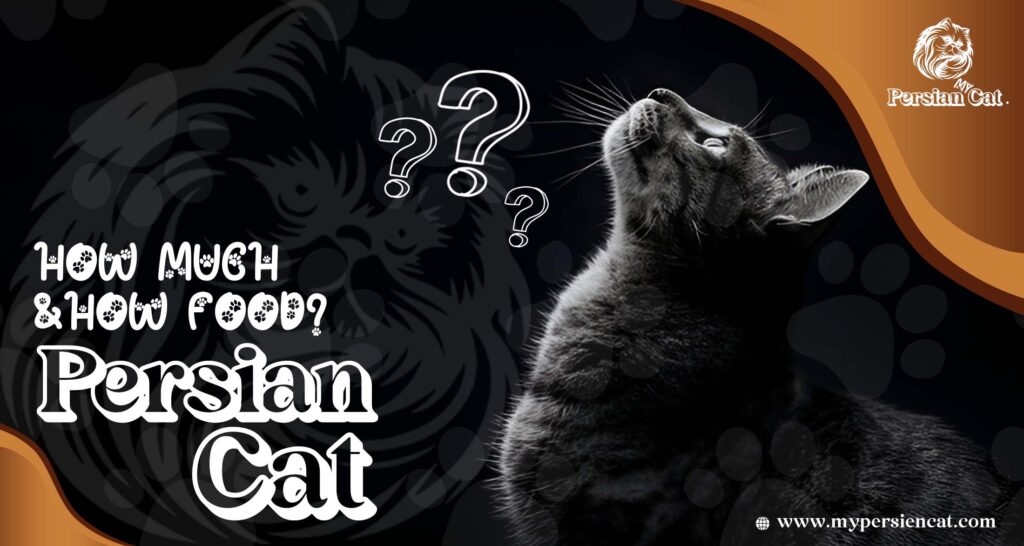
How Much and How Often Should You Feed a Persian Cat?
Feeding a Persian cat isn’t one-size-fits-all. It depends on age, size, and even mood! When I first got my kitten, I had no clue how often she should eat. I learned fast—she needed food more often than I thought.
Persian Kittens (0–12 months):
Kittens grow fast. They need more food—and more often. I fed my kitten 3 to 4 small meals a day. Her food had to be soft, rich in fat, and packed with protein. I used Persian kitten cat food made just for tiny bellies. Wet food was her favorite—it was gentle and easy to chew.
Adult Persian Cats (1–7 years):
Once they grow up, it’s time to switch to adult Persian cat food. Two meals a day works best. I feed my adult cat in the morning and again in the evening. She loves dry food with a bit of wet food on top. It keeps her full and her coat shiny. I also make sure her food is high in protein and has fiber to help with hairballs.
Senior Persian Cats (7+ years):
Older cats need extra care. They don’t move as much, and their teeth can get sensitive. I switched to softer food with fewer calories. I still feed twice a day, but the portions are smaller. The best Persian cat food for seniors has joint support and is easy to chew. No matter the age, water is key! Persian cats don’t always drink enough. I leave fresh water out all day and sometimes add a splash to her food.
Each cat is different. Some eat fast, some like to snack. I learned to watch my cat—her eyes, her coat, even her mood. If she skips meals or gains weight, I talk to the vet. In the end, the right Persian cat food—and the right schedule—can make a big difference. Happy cat, happy home!
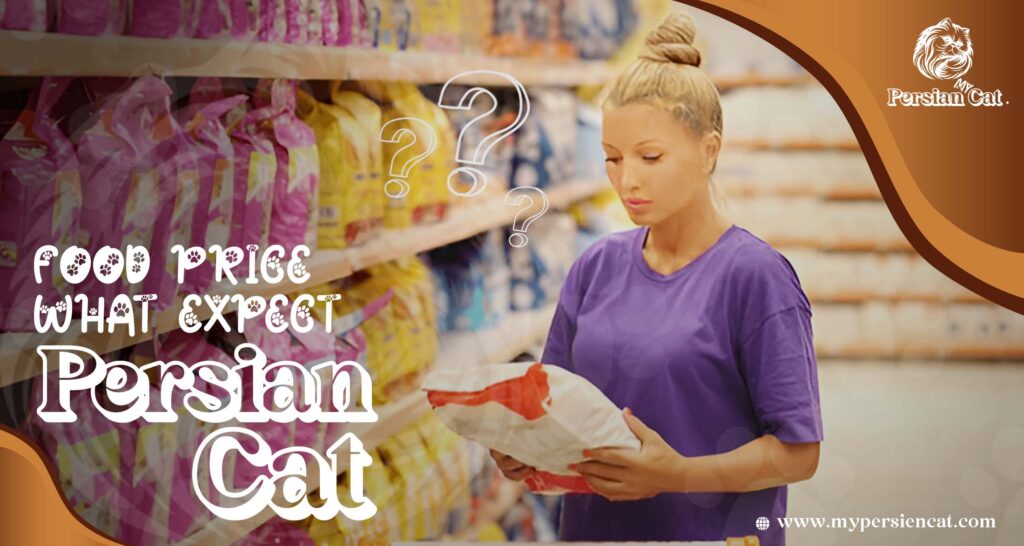
Persian Cat Food Price: What to Expect
Feeding a Persian cat can cost a bit more than feeding a regular cat. This is because the best food for Persian cats often has special ingredients. These foods help with their long coats and sensitive tummies.
Dry cat food for Persians usually costs less. You can find good options for about $15 to $30 per bag. It lasts longer and is easy to store. If your Persian likes dry food, this can be a good choice.
Wet food is softer and can be tastier for picky cats. But it costs more. A can of wet Persian cat food might cost around $1 to $3 each. Feeding wet food every day can add up, but it helps keep your cat hydrated.
Premium foods like Royal Canin Persian cat food tend to be pricier. They cost more because they are made just for Persian cats. The price is often $30 to $50 for a medium-sized bag or box. This food helps with hairballs and flat faces.
Homemade Persian cat food can be cheaper or more expensive depending on ingredients. Fresh chicken and veggies cost money and take time to prepare. But you know exactly what goes into your cat’s bowl.
In the end, Persian cat food price varies. It depends on what you buy and what your cat needs. Choosing the right food means balancing cost with quality. A happy, healthy Persian is worth it!
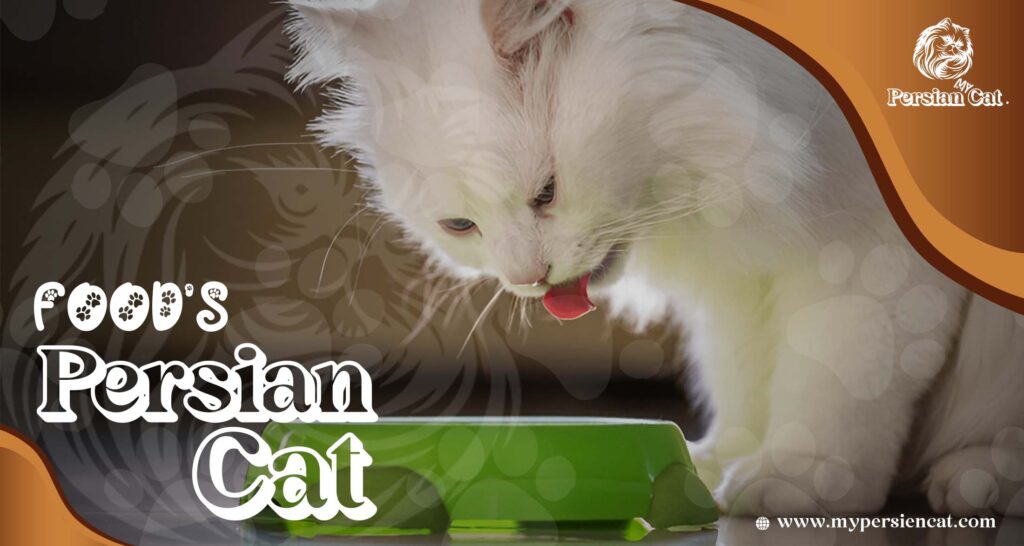
Final Thoughts: Healthy Food = Happy Persian
If there’s one thing I’ve learned from living with a Persian cat, it’s this—they know what they want. And they’ll let you know in their own dramatic way. One day, my cat is purring over her wet food. The next? She acts like I gave her rocks in a bowl.
Honestly, I get it. Persians are picky. They’re soft, fancy, and worth the effort. The trick? Watch your cat. Does she finish her food? Is her coat shiny? Is she coughing up fewer hairballs? These small signs say a lot. More than any label ever could. Your cat will show you what works—if you pay attention.
And hey, if you’re not sure what to try, don’t guess. Call your vet. I’ve done it so many times. I once asked if pumpkin was safe. (It is!) I also checked if I could switch food brands fast. (Nope—do it slowly.)
So, what’s the best food for a Persian cat? Honestly, there’s no perfect answer. But here’s what I’ve learned:
- Dry food is easy—just make sure it’s made for flat faces.
- Wet food helps picky eaters and keeps them hydrated.
- Homemade food can be great—with help from your vet.
- Royal Canin Persian costs more, but it helped my cat a lot.
- Human food? Only tiny, safe bits—and not too often.
In the end, it’s not about trends. It’s about what makes your cat feel good, look good, and act like the royal diva she is. Because let’s be real—a healthy Persian is a happy Persian. And a happy Persian? More cuddles. Fewer vet visits. Less drama at dinner. 🐾
FAQs About Persian Cat Food
What is the best Persian cat food overall?
It depends on your cat. But many vets recommend Royal Canin Persian Cat Food. It’s made for flat-faced cats and helps with hairballs and tummy issues.
What food should I give my Persian cat?
Go for food that’s high in protein and low in grains. Look for added omega-3s and fiber. Brands like Royal Canin, Wellness, and Hill’s Science Diet are all good.
Can Persian cats eat regular cat food?
They can—but it’s not the best choice. Regular food can be too hard to chew. It may also lack nutrients for their coat and digestion. Food made for Persian cats works better.
Should I feed wet or dry food?
Both are good! Dry food is easy to store and helps clean teeth. Wet food adds moisture and is soft to eat. A mix of both often works best.
How much does Persian cat food cost?
Dry food costs around $15–$30 per bag. Wet food is usually $1–$3 per can. Premium food, like Royal Canin, can be $30–$50. Homemade meals vary based on what you use.
Can I feed homemade food every day?
Yes—but be careful. You’ll need to balance the vitamins and minerals. It’s smart to ask your vet and maybe add a supplement.
How do I know if my cat likes the food?
If they eat it well, have shiny fur, normal poop, and lots of energy—great! But if they stop eating, throw up, or seem off, try something new.
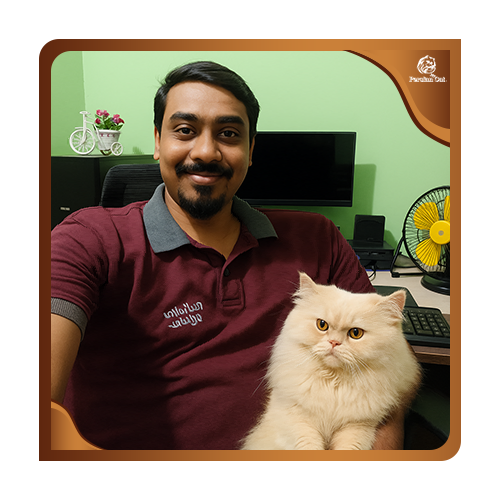
Authorize Advisor
Yasin Ahmed Tusher
I Have Five Years of Experience With Persian Cat
In that time, I have learned a lot about how to care for them. Persian cats have long, soft fur, so they need to be brushed often. I know how to brush and bathe them to keep their coats clean and smooth.
I also understand what they like to eat and how to keep them healthy. Persian cats are calm and loving. I enjoy spending time with them and making sure they feel happy and safe.
I can give them medicine if needed and watch for signs of illness. I know how to care for both kittens and older cats. Taking care of Persian cats is something I do with love and care every day.
Phone : 01978040328
Email : info@mypersiencat.com
Food’s
food’s food’s food’s food’s food’s food’s food’s food’s food’s food’s food’s food’s food’s food’s food’s food’s food’s food’s food’s food’s food’s food’s food’s food’s food’s food’s food’s food’s food’s food’s

